Most unpleasant pain in the waist and spine is related to diseases such as osteochondrosis. It affects about 40% of men and women aged 30-40 and about 90% of elderly people. Therefore, the earlier the disease is diagnosed and the more thorough the patient’s examination, the greater the possibility of preventing the progression of osteochondrosis and staying active in old age.
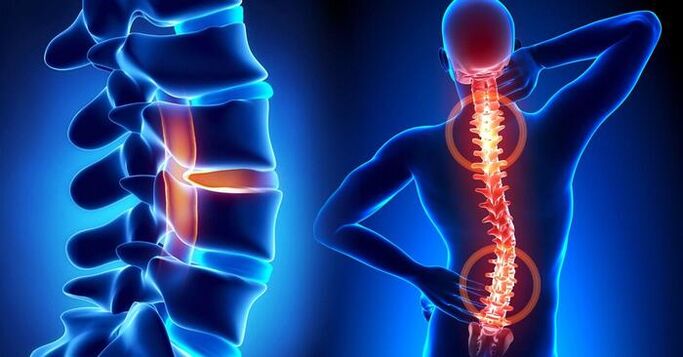
Definition of disease, cause of disease
So, what is osteochondrosis, where does it develop, what structures does it affect, and what is the treatment? This disease affects the tissues between the spine and vertebrae and manifests as violations of their shape, density, elasticity, and sometimes even integrity. As a result, the distance between the vertebrae decreases, the spine gradually loses stability, compresses the nerves, forms a hernia, and is accompanied by low back pain and discomfort during exercise.
If we briefly describe the nature of osteochondrosis, then this is the gradual wear and tear of the intervertebral disc (cartilage) tissue, leading to instability of the spine. If left untreated, ligaments and joints will degenerate, osteophytes will appear, posture disorders, and movement accompanied by pain.
Causes of spinal osteochondrosis:
- Inactive lifestyle, insufficient muscle load;
- Spinal injury;
- Systemic strong pressure on the spine;
- Genetic
- overweight;
- Low temperature;
- Hormonal and autoimmune diseases;
- Toxic poisoning;
- Congenital connective tissue failure;
- Psychosomatic reasons (stress, depression, etc. ).
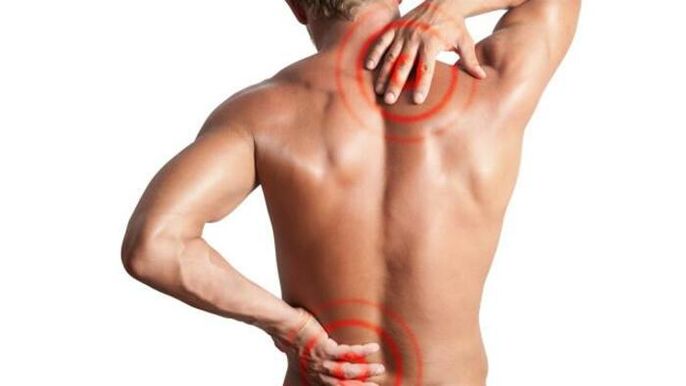
Symptoms of osteochondrosis
The disease is characterized by periods of remission and exacerbation with varying degrees of symptom severity. The main symptoms of osteochondrosis of the spine, the characteristics of the main disease types, lumbar spine, cervical spine and thoracic spine:
- The pain is limited to a specific area of the spine;
- Reflex pain syndrome associated with damage to nearby musculoskeletal tissue;
- Myelopathy and radiculopathy caused by compression of the nerve endings of the spinal cord and blood vessels.
The list of symptoms of osteochondrosis may vary depending on which part of the spine is affected by the disease. Namely: The patient noticed muscle tingling, numbness of the limbs, other sensory disturbances, decreased strength of the arms and legs, headache and heart pain, and low back pain.
Pathogenesis of osteochondrosis
Before the elastic fiber core of the intervertebral disc begins to lose elasticity and deformation, some processes involving osteochondrosis will occur in the human body:
- Cramps, dystonia, inflammation;
- Decreased blood circulation;
- Damage to the process of nerve cells.
In addition, the deformed annulus appears to be cracked, the intervertebral disc is herniated, and a hernia is formed. Usually, these suggestive factors for spinal diseases appear in childhood or adolescence, and are usually the result of poor posture, scoliosis, sports injuries, infectious diseases, or congenital vascular diseases.
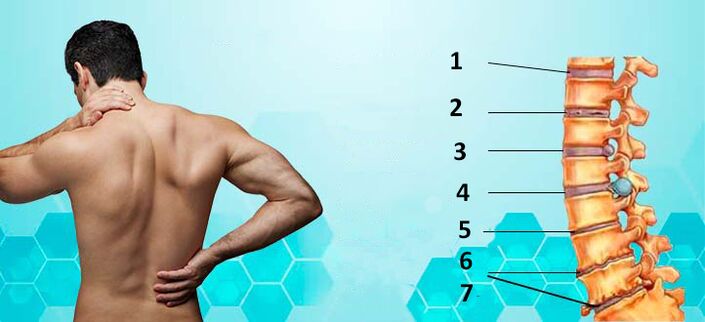
Stages of osteochondrosis
The development of spinal osteochondrosis is divided into three stages:
- First, the intervertebral discs begin to lower in height, gain a flat shape, lose water, elasticity, and can protrude;
- The second time it develops without treatment, it is manifested as a violation of the annulus fibrous structure of the intervertebral disc, cracks, and instability in a certain area of the spine;
- It is characterized by the rupture of the intervertebral cartilage, the development of hernias, and the formation of osteophytes.
The symptoms of spinal osteochondrosis development become more intense from the first stage to the third stage.
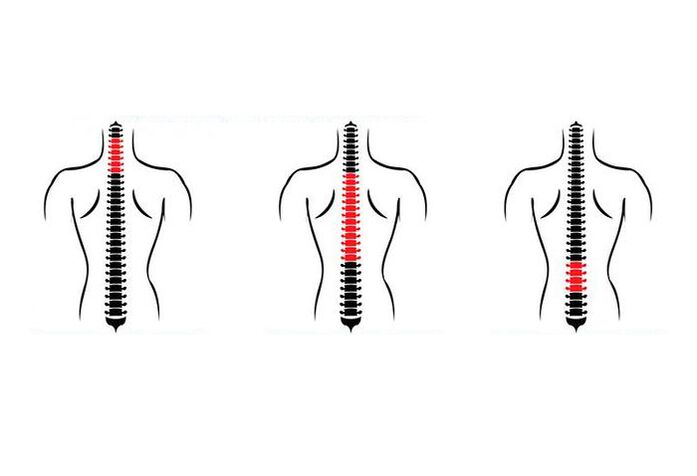
Classification of osteochondrosis
The classification of osteochondrosis is based on several signs, mainly the localized area. distinguish:
- Lumbar osteochondrosis;
- Cervical osteochondrosis;
- Thoracic osteochondrosis.
Lumbar osteochondrosis is manifested as lumbar pain, which is aggravated as the body rotates and lifts weights. Pain can be applied to the legs or both legs and is characterized by pain. For acute syndrome, a hernia is suspected. Lumbar osteochondrosis, leg muscle cramps, skin peeling often occurs.
With the development of cervical spine osteochondrosis, the 1-7th vertebrae are affected. The disease is accompanied by headaches in the back of the head, pain in the neck, collarbone, and shoulders. When the head rotates, there may be a crunching sound, numbness in the upper limbs, and a lump in the throat.
Due to osteochondrosis of the spine in the chest area, the patient is worried about pain in the chest, shoulders, armpits, and heart. Maybe it's the feeling of shortness of breath, the onset of intercostal neuralgia.
Lumbar osteochondrosis is the most common, and thoracic osteochondrosis is the rarest.
Complications of osteochondrosis
If the patient considers the treatment of osteochondrosis too late, when the symptoms of the disease are obvious, the following complications may occur:
- Intervertebral hernia;
- Spinal cord stroke;
- Kyphosis;
- protrude;
- Radiculitis;
- Paralysis of the lower limbs.
Without treatment, patients begin to experience regular deterioration of their condition, which is characterized by increased pain, restricted movement, and a sharp deterioration in general health. The most terrible complication of osteochondrosis of the spine is disability. Therefore, in order to prevent this serious change in the work of the musculoskeletal system, high-quality and timely treatment of osteochondrosis is required.
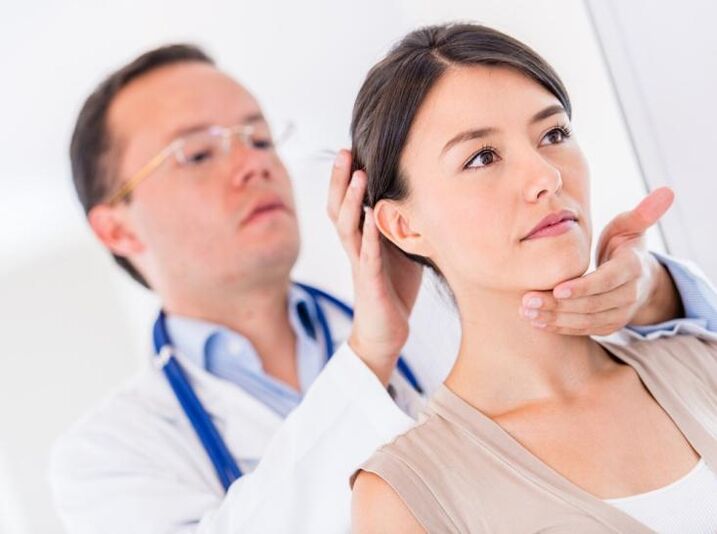
Diagnosis of osteochondrosis
Diseases such as osteochondrosis are mainly spinal pain. But it is important to distinguish it from pain caused by problems other than disc degeneration. To this end, the doctor will conduct a step-by-step diagnosis, which includes:
- Take medical records, Which means a dialogue between the expert and the patient to determine the exact area of pain location and the factors that make the condition worse. It is important to understand the patient’s occupation, the period of spine problems, the time of deterioration, the type of pain in the waist and other parts, and the treatment methods used by the patient.
- Physiological examinationAllows you to determine the proportions of your body, the quality of movements and movements, skin conditions, and pain sensitivity. The doctor determines the condition of the muscle tissue, whether there is a seal, edema, etc. through palpation.
- X-rays of the spine in two planesUsed for visual assessment of the condition. Allows you to determine the displacement of the vertebrae, the presence of osteophytes, and salt deposits.
If the collected prescription treatment data is insufficient, or if there is serious disease in the spine, CT and magnetic resonance imaging can be prescribed for the patient, which can examine the vertebrae, blood vessels, soft tissue tissues, and nerve processes in detail, and create a picture of the spine state affected by osteochondrosis. Complete picture to determine strategic treatment.
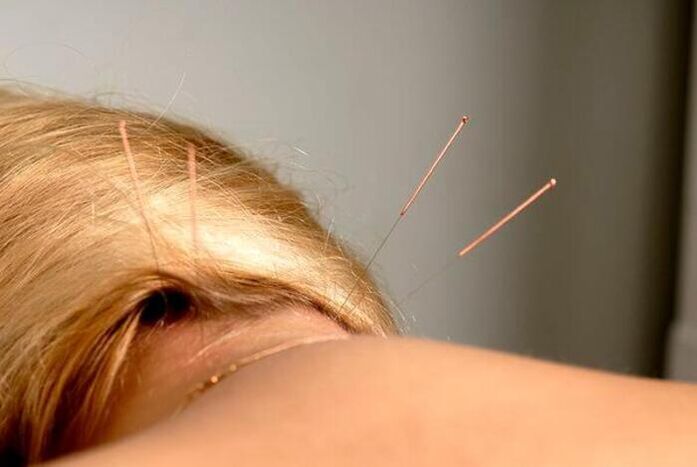
Treatment of osteochondrosis
Like any disease, osteochondrosis needs to determine the cause of its development. Reducing the severity of symptoms is not the main thing, but an important stage of treatment, the outcome of which depends on many factors. In some cases, it can be completely cured, while in other cases, it can prevent complications and disability.
In the treatment of spinal osteochondrosis, a set of measures are used:
- Change the patient's daily diet plan;
- Prescribe medication to relieve symptoms;
- Physiotherapy procedures (massage, acupuncture, electrophoresis, exercise therapy, etc. ).
Changes in the daily regimen for treatment of spine osteochondrosis include reducing the intensity of physical activity, bed rest for severe pain, and avoiding sharp turns and sharp bends.
Drugs for treating osteochondrosis of the spine
They can be divided into several groups:
- Muscle relaxants used to relieve pain include tablets, injection anesthetics, and anti-inflammatory injections for osteochondrosis. Homeopathic preparations normalize thyroid function, improve lymphatic drainage, and have anti-inflammatory, detoxifying and immunomodulating effects.
- Non-steroidal anti-inflammatory drugs. When used in patients with osteoarthritis, it can reduce the progression of joint inflammation and destructive changes, improve the integrity, thickness and other characteristics of cartilage, and stimulate bone tissue repair.
- Anti-inflammatory topical ointment and alternative transdermal patch. Such drugs have analgesic, anti-rheumatic, antipyretic and anti-inflammatory effects. The mechanism of action is to reduce the production of inflammatory mediators, lower body temperature and pain.
- Chondroprotective agent;
- Therapeutic analgesic blockers;
- B vitamins.
Adjuvant therapy
Among the additional funds that can be used to treat, alleviate the general condition and improve the function of the spine and intervertebral discs, the most effective are:
- acupuncture;
- Magnetic therapy;
- Professional massage and self-massage;
- Physical education
- Manipulative therapy.
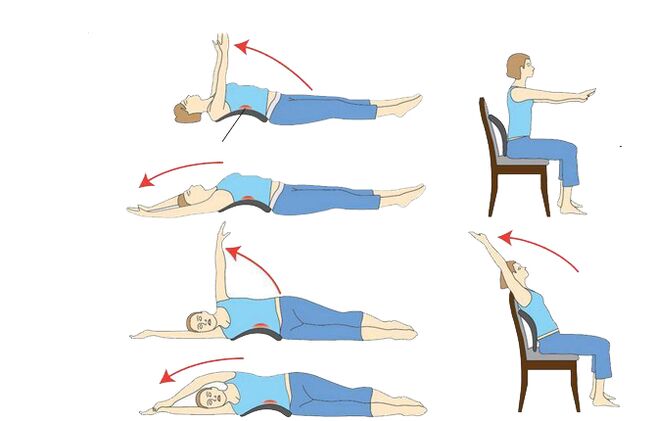
Forecast, prevent
If the spine disease is not ignored and carried out without serious complications, after 1. 5-2 months of effective treatment, the condition can be significantly improved and the disease can be prevented from turning into a chronic form. In difficult situations, the doctor recommends surgery.
Prevention of osteochondrosis of the spine includes:
- Adhere to the correct daily diet, change body posture and moderate physical activity;
- Visit the swimming pool regularly;
- Weight control;
- Wear comfortable shoes;
- Balanced diet;
- Sleep on orthopedic pillows and mattresses;
- Take missing nutrients or preventive homeopathic medicines to boost immunity, improve overall health, and eliminate dystonia.
It is necessary to have a physical examination every year and to consult a doctor for treatment immediately after any spinal pain occurs.
No matter what kind of osteochondrosis we are talking about-lumbar spine, cervical spine or thoracic spine, it should be a good habit to pay attention to your health, especially when it comes to the foundation of the entire musculoskeletal system-the spine.






































